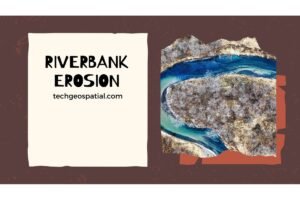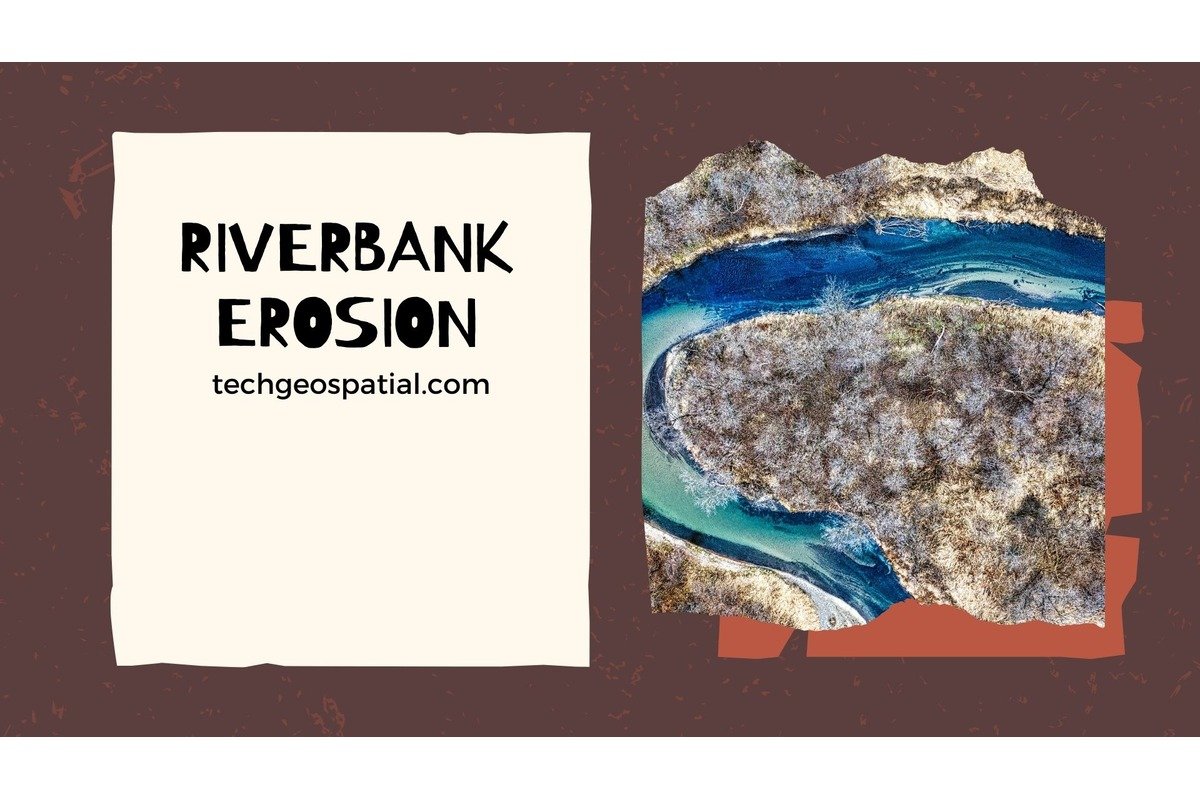Understanding Riverbank Erosion
Riverbank erosion is a natural geomorphological process whereby the soil, rock, or sediment along the banks of a river is gradually worn away and carried downstream by the force of flowing water. It is a significant environmental phenomenon with widespread implications for ecosystems, human settlements, and infrastructure. Understanding the causes, mechanisms, and consequences of riverbank erosion is crucial for effective management and mitigation strategies.
Causes of Riverbank Erosion:

Several factors contribute to riverbank erosion, including:
- Hydrological Processes: Changes in river flow patterns, such as increased discharge during heavy rainfall or snowmelt, can accelerate erosion along riverbanks. High-velocity flow exerts greater erosive force, especially on unprotected or poorly vegetated banks.
- Geological Factors: The composition and structure of the riverbank materials influence their susceptibility to erosion. Soft or unconsolidated soils, such as clay or sand, are more easily eroded than hard rock formations. Geological faults, joints, or fractures can also weaken the stability of riverbanks.
- Human Activities: Anthropogenic factors, such as deforestation, urbanization, agricultural practices, and river channel modifications (e.g., dam construction, channelization), can exacerbate riverbank erosion. Removal of vegetation reduces bank stability, while alterations to river flow disrupt natural sediment transport processes.
- Climate Change: Alterations in precipitation patterns, increased frequency of extreme weather events, and rising sea levels associated with climate change can intensify riverbank erosion. Changes in temperature and precipitation regimes influence erosion rates and sediment dynamics.
Mechanisms of Riverbank Erosion:
Riverbank erosion occurs through various mechanisms, including:
- Hydrological Processes: Hydrological processes play a crucial role in riverbank erosion. Changes in river flow patterns, such as variations in discharge due to rainfall or snowmelt, can significantly impact erosion rates. High-flow events, particularly during periods of intense precipitation or snowmelt, increase the velocity and erosive force of the water, leading to accelerated erosion along riverbanks. Moreover, fluctuations in water levels and the presence of floods can further exacerbate erosion by destabilizing the soil and sediment along the riverbanks.
- Abrasion: Abrasion is another key mechanism driving riverbank erosion. It involves the physical wearing away of riverbank materials by the abrasive action of sediment particles carried by the flowing water. As water flows downstream, it carries with it a substantial amount of sediment, including sand, silt, and gravel. These particles act like natural abrasives, scouring and gradually eroding the surfaces of riverbanks over time. The intensity of abrasion is often influenced by factors such as sediment load, flow velocity, and the hardness of the riverbank materials.
- Corrosion: Corrosion, also known as chemical erosion, is another contributing factor to riverbank erosion. It involves the chemical dissolution or weakening of riverbank materials due to the presence of acidic or corrosive substances in the water. In some cases, the natural acidity of the water or the presence of dissolved minerals can accelerate the breakdown of certain rock types or soil compositions along the riverbanks. Over time, this chemical erosion weakens the structural integrity of the riverbanks, making them more susceptible to mechanical erosion processes such as abrasion and hydraulic action.
Consequences of Riverbank Erosion:
The impacts of riverbank erosion can be significant and wide-ranging:
- Loss of Land and Property: Riverbank erosion often results in the loss of land and property along the affected riverbanks. As soil and sediment are gradually eroded away, the land adjacent to the river can collapse or be washed away, leading to the destruction of agricultural fields, residential areas, infrastructure such as roads and bridges, and even cultural heritage sites located along the riverbanks. This loss can have significant economic and social impacts on communities living in these areas.
- Habitat Degradation: Riverbank erosion alters the physical and ecological characteristics of riparian habitats, leading to habitat degradation for both aquatic and terrestrial species. Vegetation along the riverbanks may be uprooted or destroyed, reducing habitat complexity and biodiversity. Additionally, erosion can lead to the loss of nesting sites for birds, spawning grounds for fish, and shelter for other wildlife species, disrupting entire ecosystems.
- Water Quality Impacts: Eroded sediment from riverbanks can degrade water quality by increasing turbidity, sedimentation rates, and nutrient loading in rivers and downstream water bodies. This sediment can smother aquatic habitats, reduce light penetration, and clog the gills of fish and other aquatic organisms. Moreover, the erosion of contaminated soils along riverbanks can introduce pollutants such as heavy metals, pesticides, and pathogens into the water, posing risks to human health and aquatic life.
- Erosion of Cultural Resources: Riverbank erosion can result in the loss of valuable cultural resources and historical artifacts located along the affected riverbanks. Archaeological sites, burial grounds, and other cultural heritage sites may be exposed or washed away as erosion undermines the stability of the land. This erosion of cultural resources represents a loss of tangible and intangible heritage, with implications for local identity, heritage tourism, and historical research.
- Economic Costs: The economic costs of riverbank erosion can be substantial, encompassing expenses related to property damage, infrastructure repair and maintenance, loss of agricultural productivity, and decreased land values. Communities affected by erosion may incur expenses for shoreline protection measures, emergency response efforts, and relocation of homes and businesses. Moreover, erosion-induced disruptions to transportation networks and utilities can result in additional economic losses for affected regions.
- Increased Flood Risk: Riverbank erosion can increase the risk of flooding in adjacent areas by altering the natural flow patterns of rivers and reducing the capacity of river channels to convey water. Erosion-induced changes in channel morphology and the loss of protective vegetation can exacerbate the impacts of flood events, leading to property damage, loss of life, and disruptions to critical infrastructure and services.
Management and Mitigation Strategies:
Effective management of riverbank erosion requires a combination of structural and non-structural measures:
- Vegetation Stabilization: Planting native vegetation along riverbanks helps stabilize the soil, reduce erosion rates, and enhance habitat for wildlife. Riparian buffer zones act as natural barriers to erosion and filter pollutants from runoff.
- Bank Protection Structures: Structural measures such as retaining walls, revetments, gabions, and riprap can be employed to armor riverbanks and prevent erosion. These structures dissipate the energy of flowing water and reduce bank scour.
- Land Use Planning: Implementing land use zoning regulations and setback requirements can minimize development in vulnerable areas prone to erosion. Strategic land use planning considers the natural dynamics of river systems and reduces human interference.
- Sediment Management: Managing sediment inputs and transport within river systems through techniques such as sediment traps, dredging, and sediment diversion helps maintain channel stability and reduce erosion rates.
- Community Engagement: Engaging local communities in riverbank management initiatives fosters stewardship and promotes awareness of erosion risks. Community-based monitoring and restoration efforts empower stakeholders to participate in conservation activities.
conclusion
In conclusion, riverbank erosion is a complex process influenced by natural and human-induced factors. By understanding the underlying causes, mechanisms, and consequences of erosion, stakeholders can develop informed strategies to mitigate its impacts and promote sustainable management of riverine ecosystems. Effective collaboration among government agencies, communities, and researchers is essential for implementing integrated approaches to riverbank erosion management in the face of ongoing environmental change.






One thought on “Riverbank Erosion”